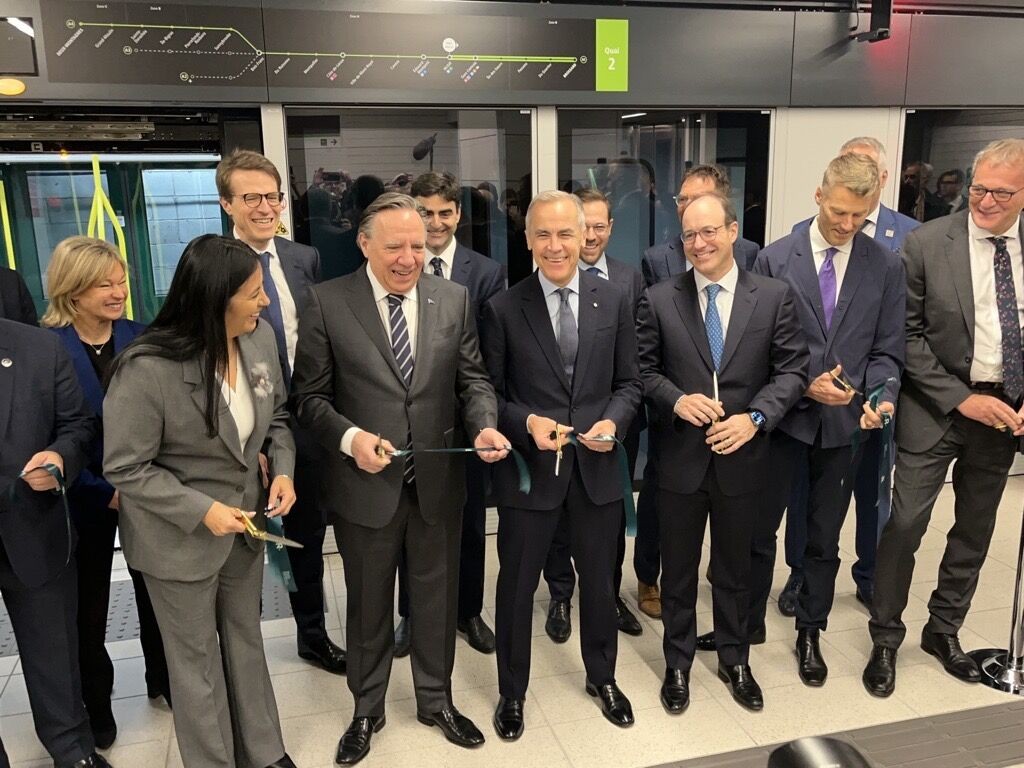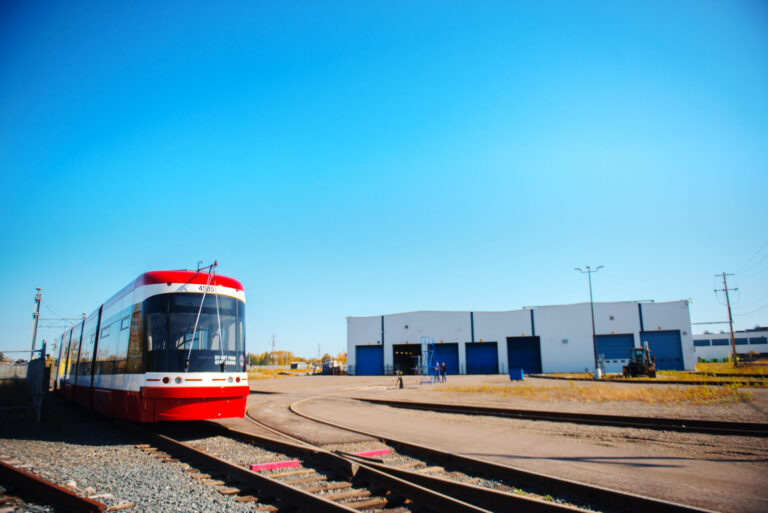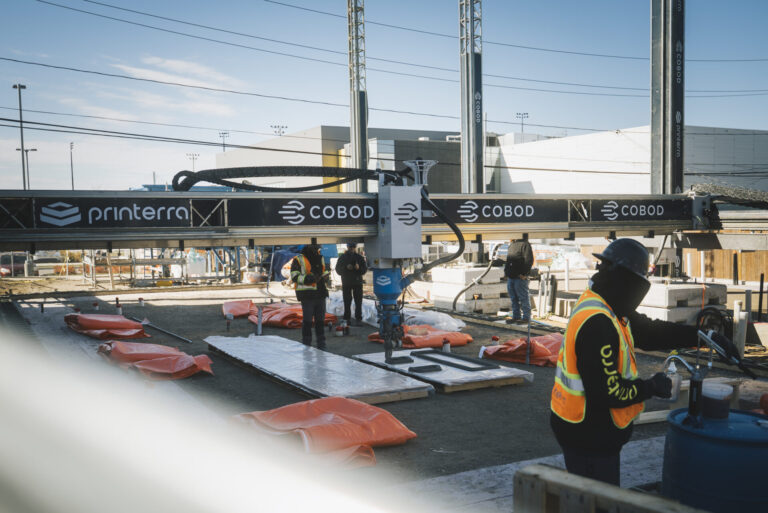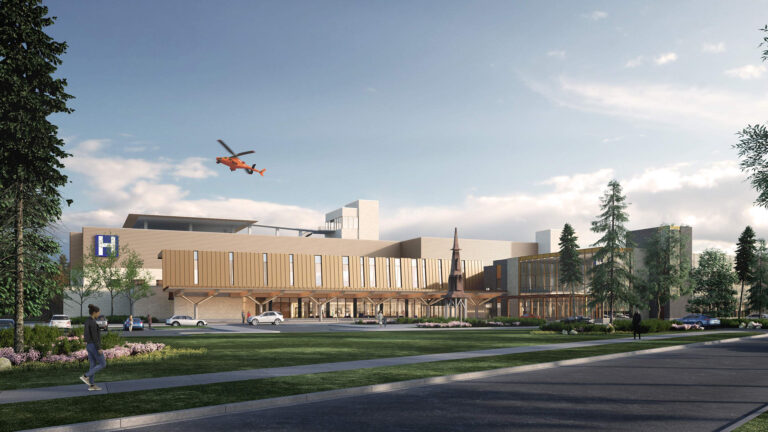CDPQ Infra announced that the Deux-Montagnes branch of the Réseau express métropolitain (REM) will welcome aboard its first riders on November 17, 2025. Commercial service between the South Shore and the North Shore will start at 5:30 a.m. on Monday morning. With 19 stations and direct access to three of Montréal’s four metro lines, as well as the soon-to-be-available Mascouche exo line.
“The REM is a world-class infrastructure project that connects Montreal, creates thousands of well-paying jobs, and catalyzes innovative partnerships between the public and private sectors. As the most significant public transit project in Quebec in half a century, the REM is a testament to our ambition: to build big, to build boldly, and to build a strong Quebec in order to build a strong Canada,” said Prime Carney Mark Carney, who attended the opening ceremony.
“Today marks an important milestone for the people of the North Shore, who will finally be served by a fast and frequent public transit system. The REM network is taking shape, and we can see that it will profoundly change mobility across Greater Montréal. But it also shows that Québec has the expertise to deliver world-class infrastructure projects. We need these major projects now more than ever. The world has changed very quickly, and we absolutely must adapt,” added Québec François Legault.
REM now has 14 new stations and 50 kilometres of network in service, tripling its coverage and quadrupling the number of stations in operation. For the first time, REM users will be able to cross Greater Montréal from Brossard to Deux-Montagnes. This new route travels through Mount Royal and across three major waterways—the St. Lawrence River, Rivière des Prairies and Rivière des Mille-Îles—and marks a major transformation in public transportation in the metropolitan area.
“We are very excited about this historic moment for the project. The addition of the Deux-Montagnes branch is a turning point for the REM, enabling tens of thousands of users to travel around Greater Montréal more quickly and easily. Completing a network that we can all be very proud of is now the focus of our energies,” said Jean-Marc Arbaud, president and CEO, CDPQ Infra
The REM project is No. 9 on ReNew Canada’s 2025 Top100 Projects report.
The REM is a public transportation project that is unique in North America, not only for its scope, but also for the efficiency with which it has been built. Built largely in the context of a pandemic, the REM was completed within a record timeframe and at a per-kilometre cost well below the best comparable projects on the continent.
The REM was built at about half the price of the least costly projects in North America, and sometimes at a third of the price, depending on the comparisons. This performance is matched by rapid commissioning: 50 km in operation after seven years of construction, where many similar projects exceed 10 years and are still not delivered.
“We are proud of our investment in the REM, one of Canada’s most significant transit infrastructure projects. 14 new stations along 33 kilometres of additional track will help move more Montrealers across the city, quickly and conveniently. This was the CIB’s first and largest investment and it shows the real impact of our work. It’s just one of over 100 CIB projects currently under construction and development across the country,” said Ehren Cory, CEO, Canada Infrastructure Bank
Against a backdrop of major challenges, the project has made it possible to upgrade the tunnel under Mount Royal, extending its usefulness for decades to come. Thanks to the expertise of its teams, two new stations in the heart of the tunnel are now ready to welcome passengers. The REM’s McGill station provides a direct connection to the Montréal metro’s green line, while Édouard-Montpetit station links the system to the blue line, making it the second-deepest station in North America. More than ever, the tunnel is playing its role as a strategic link for mobility in Greater Montréal.
“The commissioning of the REM’s Deux-Montagnes branch marks a major milestone for Montréal. This new connection propels our city into modernity by offering mobility worthy of the world’s great metropolises. By adding it to our existing bus and metro network, the REM will allow Montrealers to move around the city and the metropolitan area more easily than ever, while also building a metropolis that lives up to our ambitions,” said Soraya Martinez Ferrada, Mayor of Montréal.
In anticipation of the commissioning of the Deux-Montagnes branch, REM operator Pulsar has increased the number of employees dedicated to operating and maintaining the REM. This enhancement is designed to strengthen its ability to intervene on the network and communicate rapidly with users.
As of November 17, Pulsar will therefore be able to handle all direct communications to users related to the REM’s operations, whether on the network, on digital platforms or via the media.
“The past few months have demonstrated our teams’ commitment to strengthening their capabilities to operate a large-scale network and the importance of moving forward step by step. This approach will allow us to deliver a high-quality experience that meets the expectations of users who will start adopting the REM as of November,” said Loïc Cordelle, General Manager, Pulsar.
Technical teams will continue testing the Anse-à-l’Orme branch until spring. This ongoing work will mean the service schedule between Côte-de-Liesse and Deux-Montagnes stations will be modulated. In the morning, service will start at around 5:30 a.m. from Brossard and Deux-Montagnes. In the evening, the last departure toward Deux-Montagnes station from Brossard will be at 8:30 p.m. Service between Brossard and Côte-de-Liesse will continue until the last departure at 1 a.m. on weekdays.
Shuttle buses will be provided by public transportation partners to ensure evening service beyond the Côte-de-Liesse station. Users are advised to consult trip planners such as Transit or Chrono, or the REM website, to find out exactly what options are available.
Featured image: (CIB)












